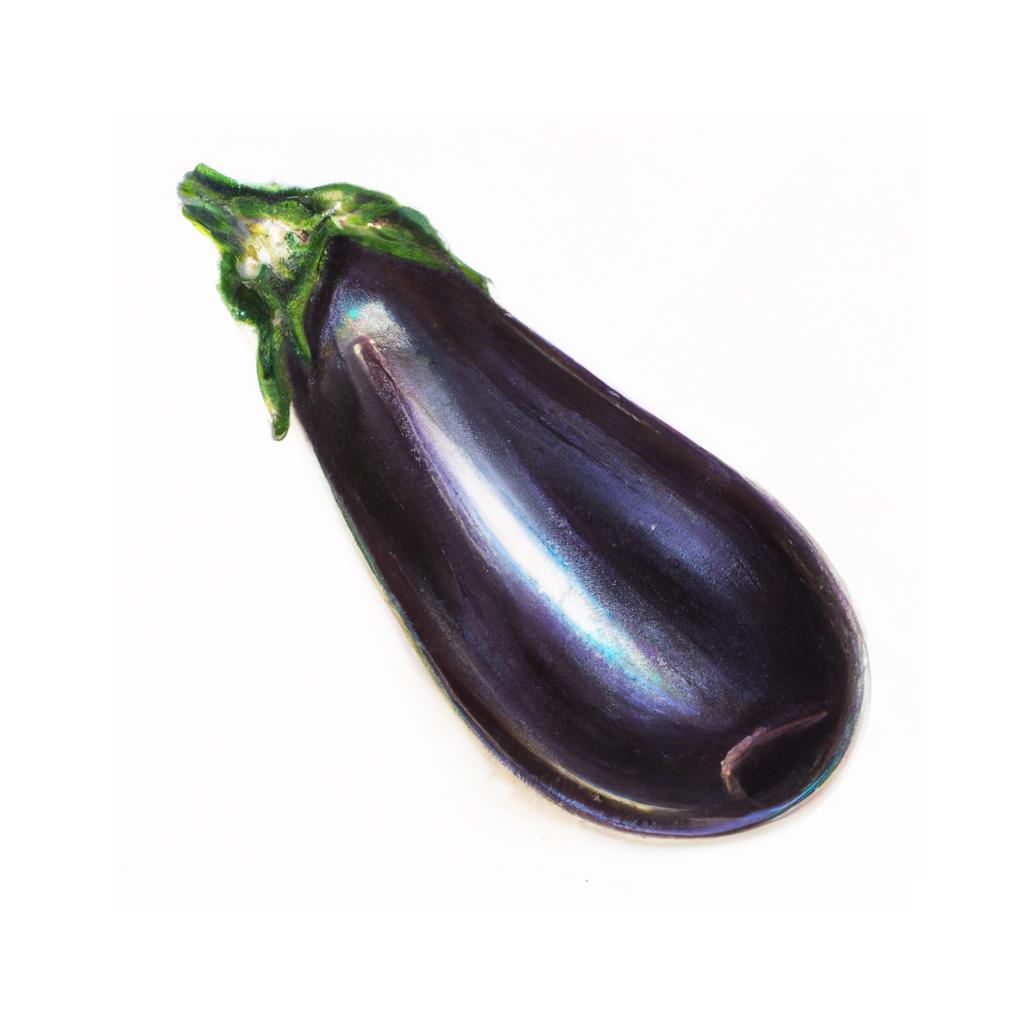
Aubergine, also known as eggplant, belongs to the nightshade family of plants, which also includes tomatoes, potatoes, and peppers. This deep purple or black fruit (botanically, it's a berry) is native to South and East Asia and has been cultivated for thousands of years for its culinary versatility and unique taste. It is a staple in many cuisines around the world, including Mediterranean, Middle Eastern, Indian, and Southeast Asian dishes.
The eggplant was first spread by Arab traders throughout the Middle East, and later introduced to Europe, where it gained popularity in Italy, Greece, and Spain. Its name 'aubergine' comes from the French term, while 'eggplant' is derived from the fact that early European cultivars resembled white or yellow goose eggs.
Aubergines are low in calories and high in nutrients, such as fiber, vitamins, and antioxidants. They are especially rich in anthocyanins, which give them their deep purple color and health benefits like reducing inflammation and protecting against heart disease.
When it comes to cooking with aubergines, the possibilities are endless. They can be grilled, fried, baked, sautéed, or used in stews, and their mildly sweet and slightly bitter taste pairs well with a variety of flavors. Popular dishes include baba ghanoush, ratatouille, moussaka, and parmigiana di melanzane. Eggplant can also be stuffed with meat, vegetables, or grains and served as a main dish.
When selecting an aubergine from your garden, look for ones that are firm with glossy skin and free of wrinkles or soft spots. Smaller, younger fruits tend to have fewer seeds and a more tender texture. To prevent aubergines from becoming bitter, harvest them before they fully ripen. Once picked, they can be stored at room temperature for up to a week or in the refrigerator for slightly longer.
This is advice is most applicable to growers in the UK, you may need to adjust the timings if you live somewhere with a different climate and/or seasons.
| Month | Tasks | Advice |
|---|---|---|
| January | - | - |
| February | Sow seeds indoors, | Start sowing aubergine seeds indoors, using a heated propagator or placing the trays on a warm windowsill. Ensure the temperature remains around 18-21°C for proper germination. |
| March | Prune seedlings, Transplant to larger pots, | Once seedlings have developed two true leaves, transplant them into larger pots. Prune the tips of the plants to encourage bushier growth. |
| April | Harden off plants, Transplant into greenhouse or polytunnel, | Harden off aubergine plants by gradually exposing them to outdoor conditions, then transplant them into a greenhouse or polytunnel, planting 45-60 cm apart. |
| May | Water regularly, Support plants, | Water aubergine plants consistently to prevent fruit splitting, and use stakes or cages to support the plants as they grow. |
| June | Water regularly, Support plants, Pinch out growing tips, | Continue to water and support the plants as needed. Pinch out the growing tips once the plants reach 30-40 cm in height, to encourage bushier growth. |
| July | Water regularly, Support plants, Harvest aubergines, | Keep watering and supporting plants. Begin harvesting aubergines when they reach a mature size and have a glossy appearance. Pick them before the skin becomes dull. |
| August | Water regularly, Support plants, Harvest aubergines, | Continue to water, support, and harvest aubergines throughout August. Consistent harvesting encourages further fruit production. |
| September | Water regularly, Support plants, Harvest aubergines, | Continue to water, support, and harvest aubergines throughout September. As temperatures cool, ripening may slow down. |
| October | Harvest remaining aubergines, | Harvest any remaining aubergines before the first frost. You can also bring less mature plants indoors to extend their growing season. |
| November | - | - |
| December | - | - |